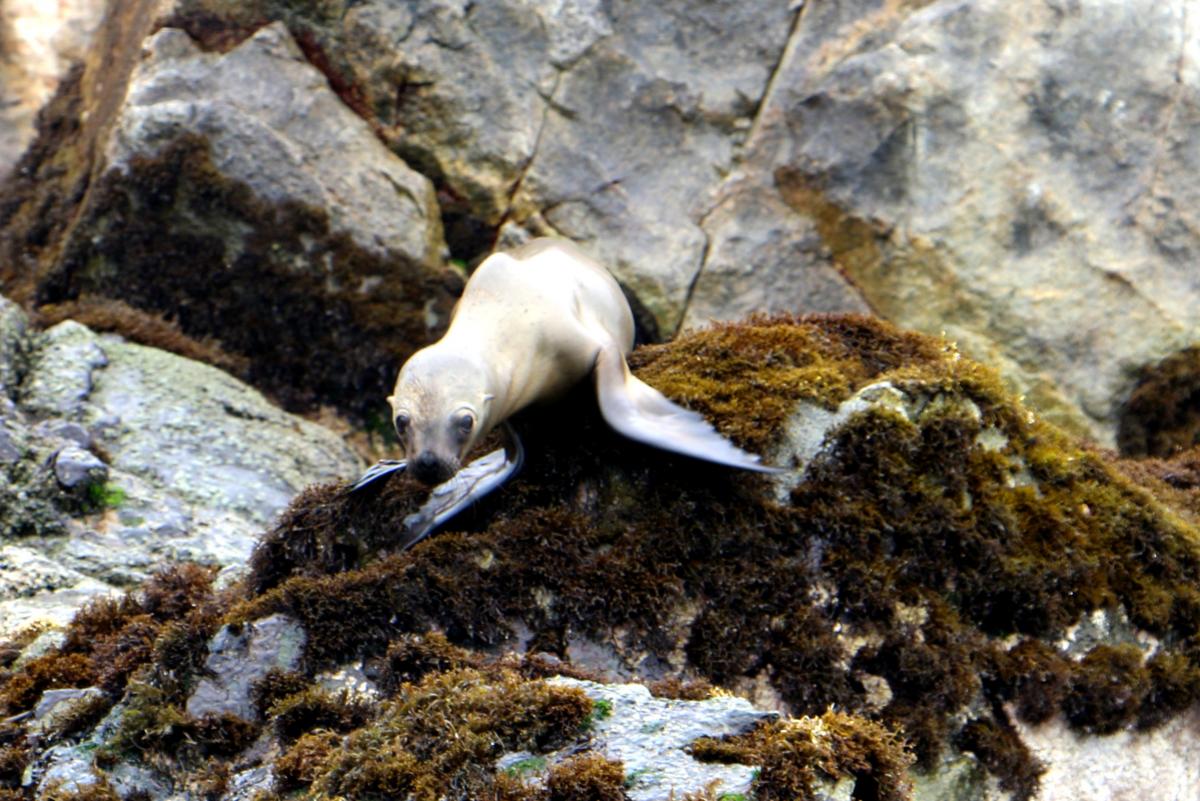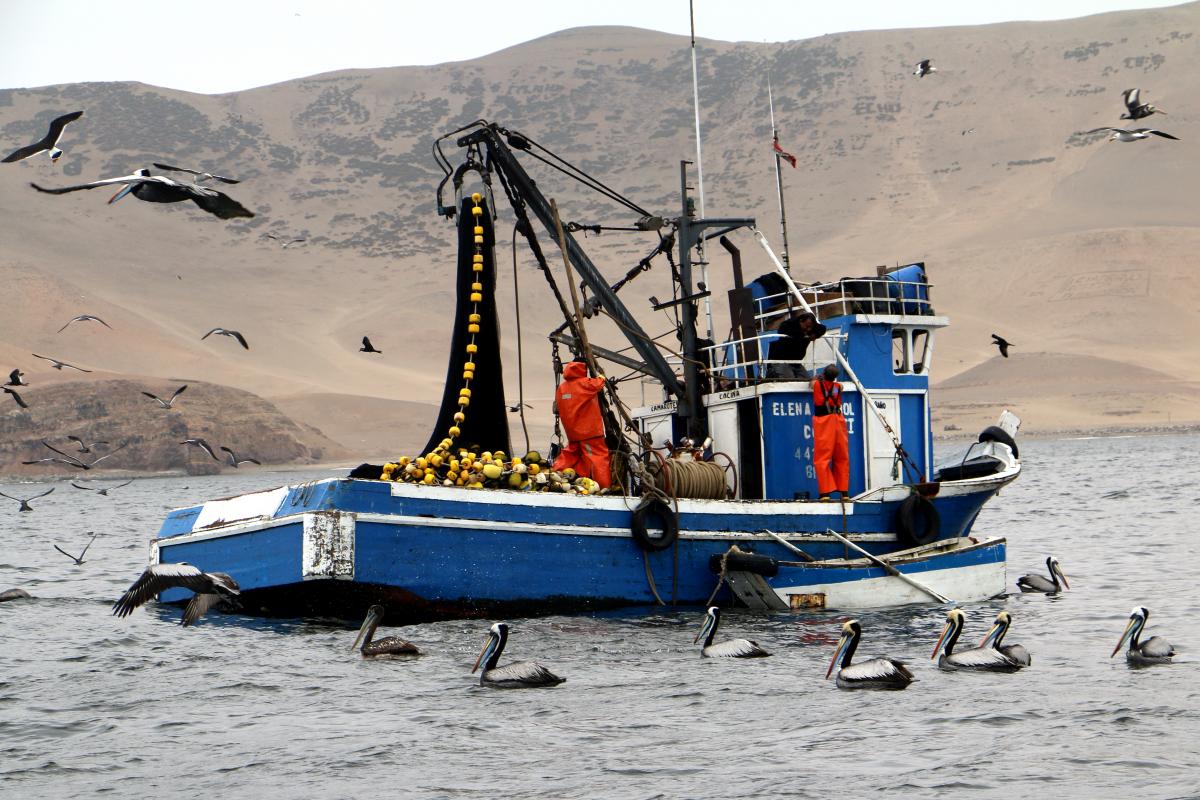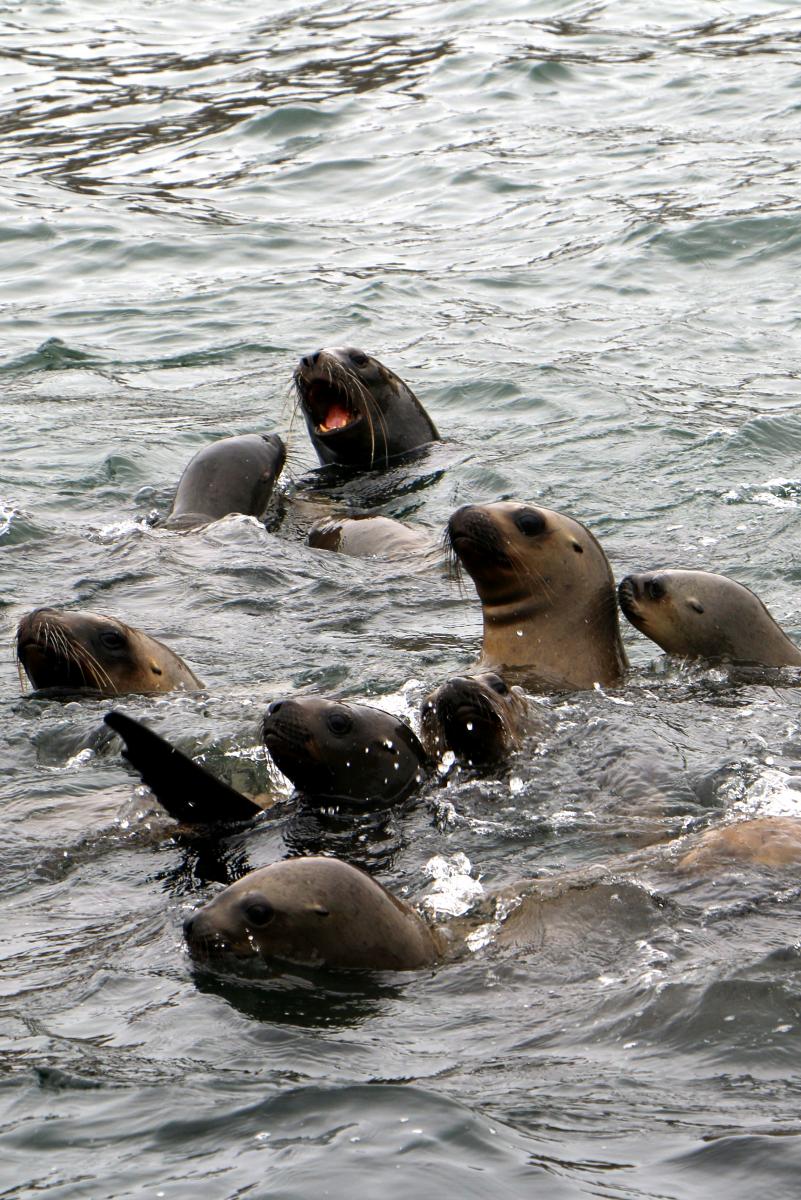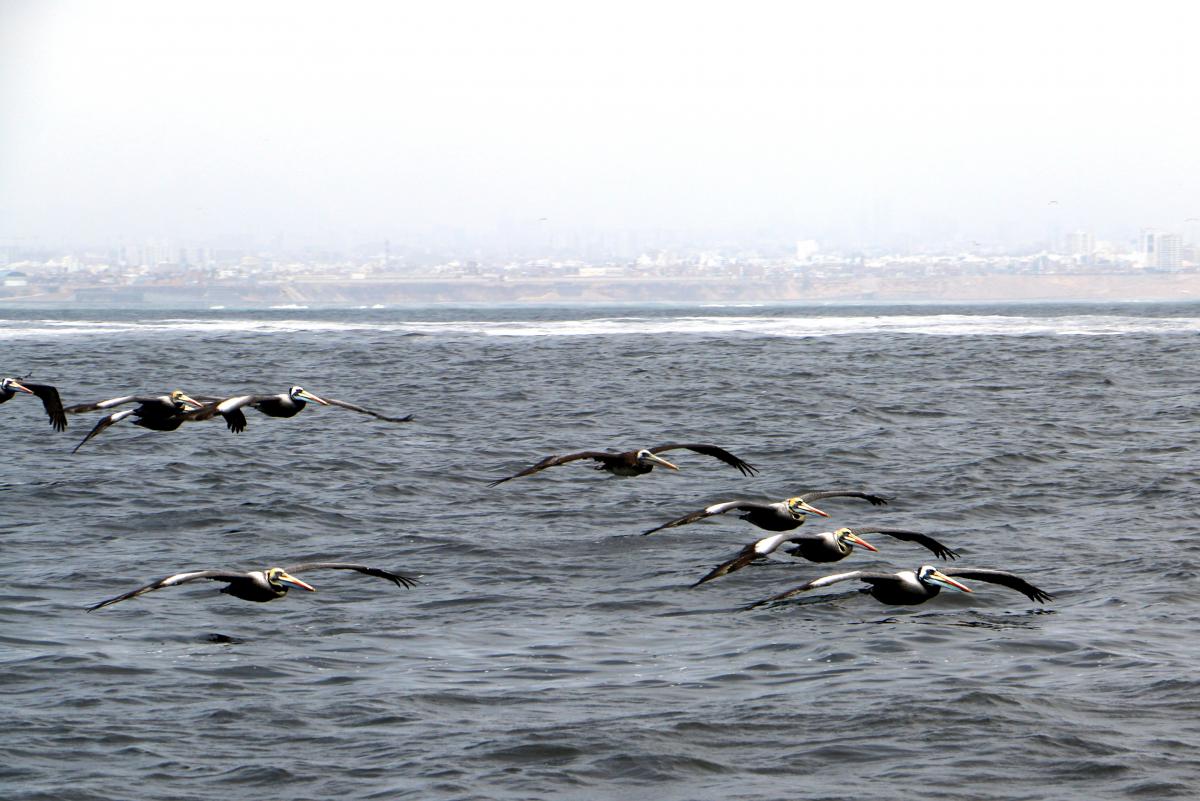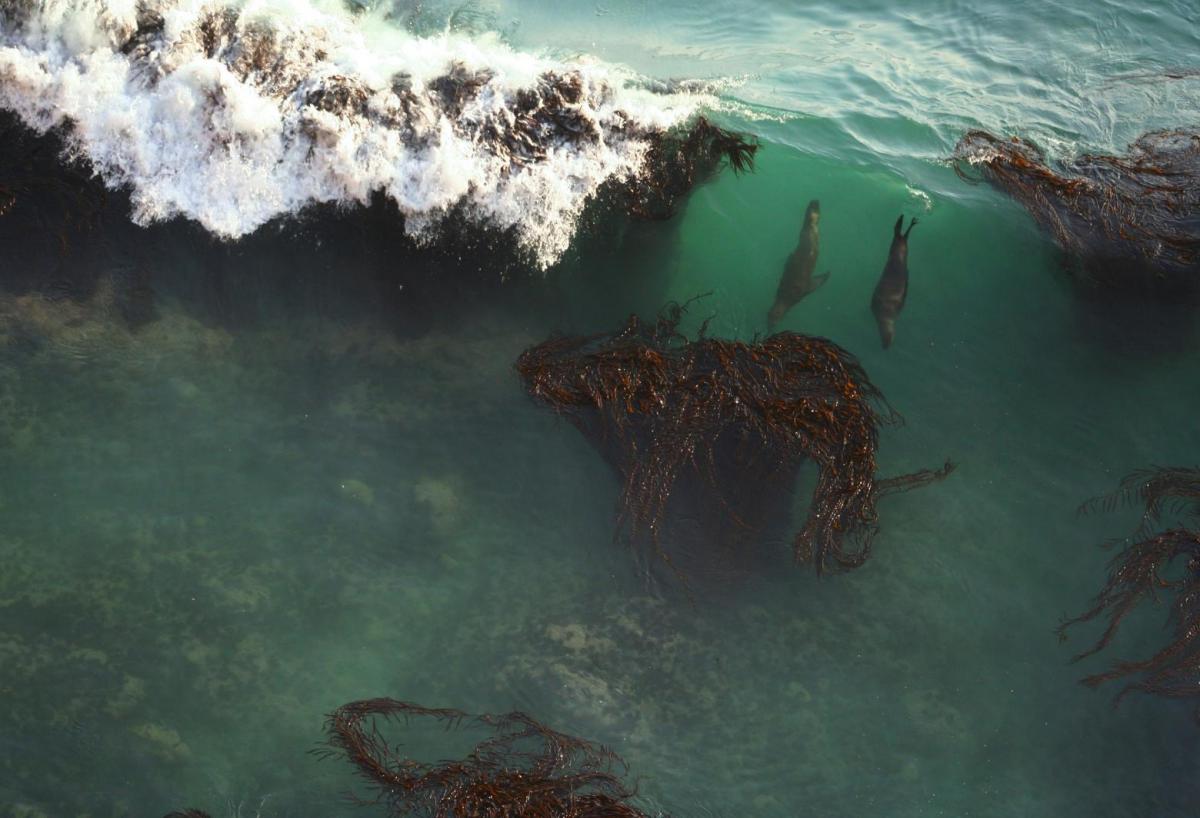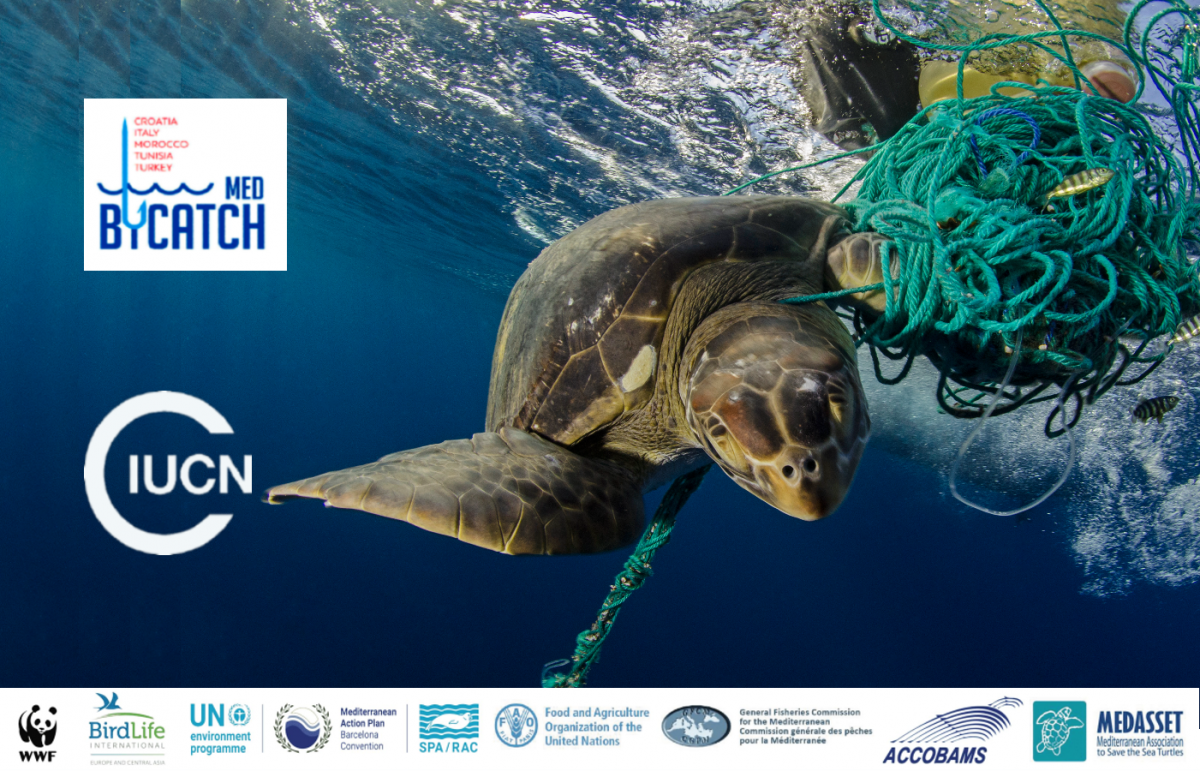On Lima's doorstep, a Peru Sea Lion colony turnaround, and new Green List commitments
Fur seals had been harvested for their skins, and colonies annihilated for their perceived, and unfounded, impact on fisheries. Dynamite was used on some colonies and mass-shootings are recorded during the 1960s. Fishing interests previously opposed the declaration of marine protected areas. Now, Peru is moving to protect marine areas and adopt Green List standards, and the fishing industry is gradually committing to conservation.
"It's a treasure in the Lima neighborhood, the golden egg, but they don't even know there's a goose." (Eduardo Bucher)
Within sight of the silhouettes of the Lima metropolis and its port, Callao, lie the large bulk of Isla San Lorenzo and the smaller rocks of Carazcas and Islas Palomino, breeding grounds for a colony of two species of seal and many other flora and fauna species.
In 1969 a census of sea lions (both South American Sea Lions, Otaria flavescens, and South American Fur Seals, Arctocephalus australis ) was carried out. The survey results returned an estimate of less than 100 animals in the whole group of islands in and around Lima. A meagre haul. The results were based on observations reported by local guaneros - guano harvesters - who had an intimate daily knowledge of the islands and their changing character.
Eduardo Bucher runs MarAdentro tours, the only tour operation to the Islas Palomino, and he visits almost daily. He estimates that just on the Islas Palomino, there are now in excess of 8,000 sea lions, of both species.
His optimism is despite having seen many fluctuations in bird and animal populations, which he mainly relates to the effects of El Nino and associated climate events. In 2004 desperate and starving pelicans were seen scavenging at market stalls. In 2011 the breeding sea lion population tumbled dramatically and it was a shock to him to see how few pups were to be found on the rocks.
The first Peruvian marine protected area, the beginning of the turnaround
Peru’s first marine protected area was the Paracas Marine Reserve, established in 1979. At that time, it was believed to be the only possible chance for the long-term survival of the Peruvian subspecies of South American Fur Seal and the South American Sea Lions.
The Reserve signified a historical mark in the shift of attitudes and practice towards marine conservation, and although surveys at the time showed a slow increase in fur seal and sea lion populations, they gradually made their return to ever-larger breeding colonies.
However, according to many, Peru has been slow to match its clear commitment to nature protection on land with appropriate actions in the marine and coastal waters of Peru.
A PANORAMA solution shows the San Fernando reserve protected by its own fisherman
Perhaps surprisingly, much of the impulse for marine protection has come from two sectors: artisanal fisheries and tourism. In the case of San Fernando a PANORAMA Solution entered by Bruno Monteferri, Conservamos por Naturaleza shows how the conservation answer was found with the help of Peruvian Fisherman.
Today, the local fishermen of Marcona (Ica, Peru) are part of the Management Committee of the National Reserve of San Fernando, and although not everything is ideal and tensions still exist, there is now a way of dealing with issues through dialogue. Little by little, the fishermen are looking at the protected areas with new eyes. They see it as an opportunity to regulate the area and not just five untouchable marine miles. The Fishermen's Union defines an area where each local fishing collective is dependent economically and assigns responsibility for these marine resources. In this manner, the fishermen themselves have slowed economic migration from the Peruvian highlands to lucrative uncontrolled and illegal marine activities, thus ensuring that the protected area flourishes.
Back in Lima storm clouds gather
There are continual threats facing the protected area covering the Islas Palomino, covered by the “network of islands, islets and guano reserves marine protected area. A proposed development plan involving a megaproject for Isla San Lorenzo could massively affect the Palomino islands. This would threaten the delicate balance between nature and the impacts of an even larger port and development infrastructure.
“The concha de abanico” (Peruvian scallop Argopecten purpuratus) is very valuable to us here. The seals are no problem to our fishery. We have a good and regular harvest and we sell directly to the restaurants all over Lima. But if there is more shipping activity and pollution, then we will all suffer. Already we are competing with imported bivalves from elsewhere. We need this fishery.” Says Aiko Pérez, a stallholder in the Minka market of Callao.
Illegal fishing is continuing, causing worried frowns on the faces of market sellers like Aiko Peréz and official fishermen, fearing that the boats that police these waters are too few.
“We are abiding by the law and fishing when and where permitted, but too often we know of others who are taking illegally from within the Reserve boundaries. There is very little that we can do about that.” Says Roberto Gelber, a fisher with the Callao artisanal fleet.
Into the future
Peru’s commitments to marine protected areas were again recognized and promoted at the CAPLAC III event. The IUCN Green List programme is already working with marine reserves along the Pacific coast, and along with Chile, Ecuador and Colombia, Peru will promote investment and improved governance of its marine treasures and seek to raise the standard of performance along the coastline.
There is strong commitment from the fisher and tourism sectors, so the ingredients are there for success in Peruvian marine conservation.
